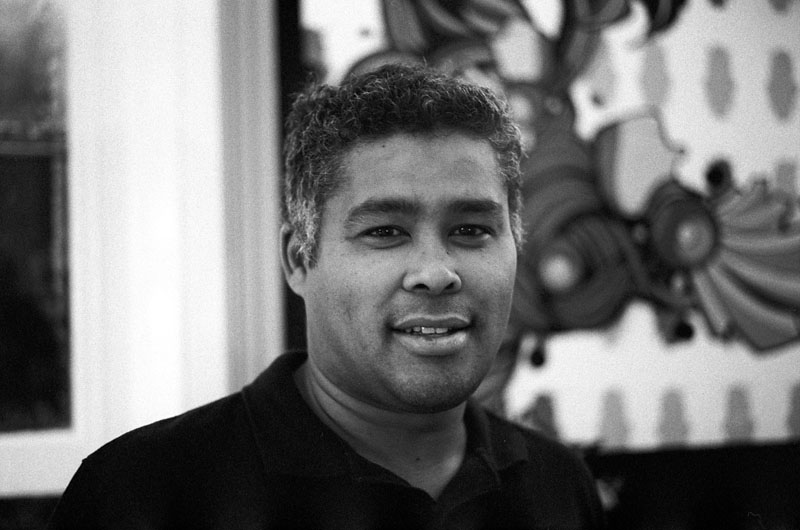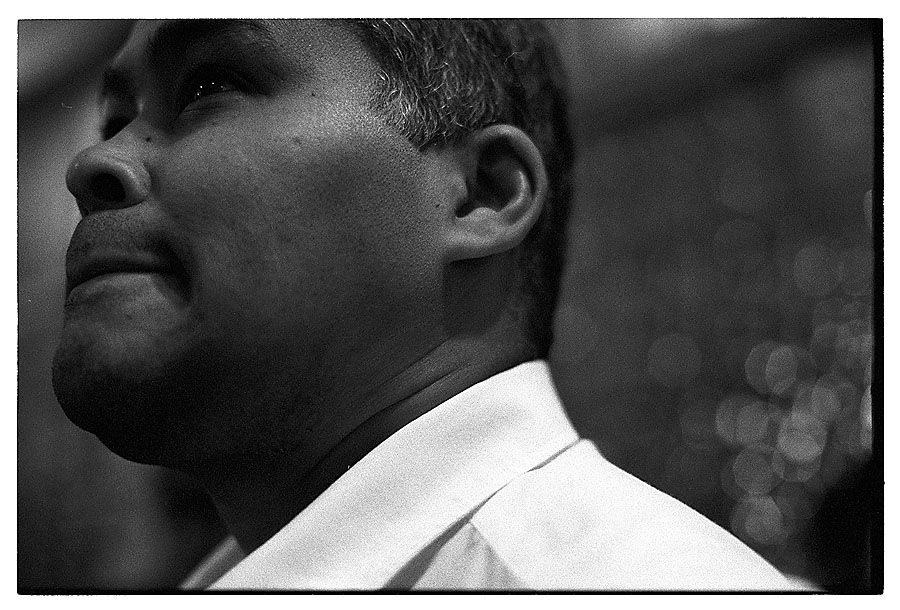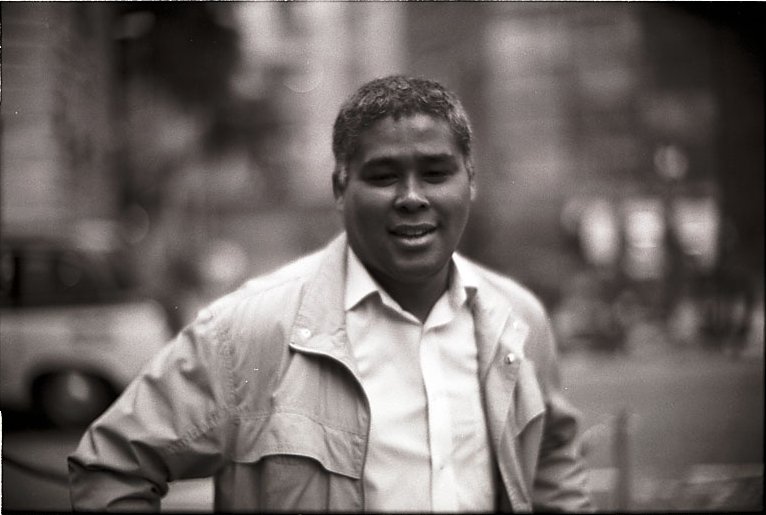Charlie,
It's good to know that you have found lenses and cameras that work for you. I have found similar success with Canon, and Cliff seems to have had good results with Nikon and Leica. The actual camera you end up with is less relevant than whether it works for you. I've yet to have much luck with rangefinders, finding the focus difficult to get right, and the lack of feedback when a shot is taken somewhat disconcerting.
My canon lenses are relatively cheap, but they perform astoundingly well. Coupled with a body with a modern lightmeter and reliable auto-focus, I can reliably catch portraits which previously i'd never have been able to get with a manual focus camera. For example, the shot below was taken with a £300 lens, a Tamron 28-75 zoom. It was shot at 75/5.6, so a couple of stops down from wide open. The detail on the jacket is quite amazing - the camera has nailed the focus (I was probably working with a focus point on the face in servo mode). This was one of three shots, all in focus as she was messing in the snow. I probably had the camera to my eye for less than 10 seconds in total. Camera was a canon 1Ds Mark II.
http://farm5.static.flickr.com/4027/4663966593_18e37d13b9_o.jpg
As for silver prints, i've got a bit of a backlog to get through here. It is certainly fun and the feedback from the process makes it very enjoyable (except when I get cat hair in my developing tray since the cat seems to be fascinated with the process).
It's good to know that you have found lenses and cameras that work for you. I have found similar success with Canon, and Cliff seems to have had good results with Nikon and Leica. The actual camera you end up with is less relevant than whether it works for you. I've yet to have much luck with rangefinders, finding the focus difficult to get right, and the lack of feedback when a shot is taken somewhat disconcerting.
My canon lenses are relatively cheap, but they perform astoundingly well. Coupled with a body with a modern lightmeter and reliable auto-focus, I can reliably catch portraits which previously i'd never have been able to get with a manual focus camera. For example, the shot below was taken with a £300 lens, a Tamron 28-75 zoom. It was shot at 75/5.6, so a couple of stops down from wide open. The detail on the jacket is quite amazing - the camera has nailed the focus (I was probably working with a focus point on the face in servo mode). This was one of three shots, all in focus as she was messing in the snow. I probably had the camera to my eye for less than 10 seconds in total. Camera was a canon 1Ds Mark II.
http://farm5.static.flickr.com/4027/4663966593_18e37d13b9_o.jpg
As for silver prints, i've got a bit of a backlog to get through here. It is certainly fun and the feedback from the process makes it very enjoyable (except when I get cat hair in my developing tray since the cat seems to be fascinated with the process).






